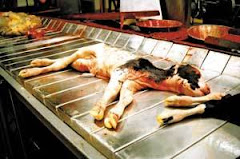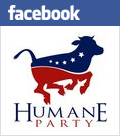I was made aware of the link to this article through another Blogger's site. I Just had to post this article. People who make their living like this are morally bankrupt, possessing no redeeming qualities what-so-ever. The link to the article: RollingStone: Boss Hog
______________________________________________________
______________________________________________________
Boss Hog
America's top pork producer churns out a sea of waste that has destroyed rivers, killed millions of fish and generated one of the largest fines in EPA history. Welcome to the dark side of the other white meat.
JEFF TIETZ
Posted Dec 14, 2006 8:53 AM
Smithfield Foods, the largest and most profitable pork processor in the world, killed 27 million hogs last year. That's a number worth considering. A slaughter-weight hog is fifty percent heavier than a person. The logistical challenge of processing that many pigs each year is roughly equivalent to butchering and boxing the entire human populations of New York, Los Angeles, Chicago, Houston, Philadelphia, Phoenix, San Antonio, San Diego, Dallas, San Jose, Detroit, Indianapolis, Jacksonville, San Francisco, Columbus, Austin, Memphis, Baltimore, Fort Worth, Charlotte, El Paso, Milwaukee, Seattle, Boston, Denver, Louisville, Washington, D.C., Nashville, Las Vegas, Portland, Oklahoma City and Tucson.
Smithfield Foods actually faces a more difficult task than transmogrifying the populations of America's thirty-two largest cities into edible packages of meat. Hogs produce three times more excrement than human beings do. The 500,000 pigs at a single Smithfield subsidiary in Utah generate more fecal matter each year than the 1.5 million inhabitants of Manhattan. The best estimates put Smithfield's total waste discharge at 26 million tons a year. That would fill four Yankee Stadiums. Even when divided among the many small pig production units that surround the company's slaughterhouses, that is not a containable amount.
Smithfield estimates that its total sales will reach $11.4 billion this year. So prodigious is its fecal waste, however, that if the company treated its effluvia as big-city governments do -- even if it came marginally close to that standard -- it would lose money. So many of its contractors allow great volumes of waste to run out of their slope-floored barns and sit blithely in the open, untreated, where the elements break it down and gravity pulls it into groundwater and river systems. Although the company proclaims a culture of environmental responsibility, ostentatious pollution is a linchpin of Smithfield's business model.
A lot of pig shit is one thing; a lot of highly toxic pig shit is another. The excrement of Smithfield hogs is hardly even pig shit: On a continuum of pollutants, it is probably closer to radioactive waste than to organic manure. The reason it is so toxic is Smithfield's efficiency. The company produces 6 billion pounds of packaged pork each year. That's a remarkable achievement, a prolificacy unimagined only two decades ago, and the only way to do it is to raise pigs in astonishing, unprecedented concentrations.
Smithfield's pigs live by the hundreds or thousands in warehouse-like barns, in rows of wall-to-wall pens. Sows are artificially inseminated and fed and delivered of their piglets in cages so small they cannot turn around. Forty fully grown 250-pound male hogs often occupy a pen the size of a tiny apartment. They trample each other to death. There is no sunlight, straw, fresh air or earth. The floors are slatted to allow excrement to fall into a catchment pit under the pens, but many things besides excrement can wind up in the pits: afterbirths, piglets accidentally crushed by their mothers, old batteries, broken bottles of insecticide, antibiotic syringes, stillborn pigs -- anything small enough to fit through the foot-wide pipes that drain the pits. The pipes remain closed until enough sewage accumulates in the pits to create good expulsion pressure; then the pipes are opened and everything bursts out into a large holding pond.
The temperature inside hog houses is often hotter than ninety degrees. The air, saturated almost to the point of precipitation with gases from shit and chemicals, can be lethal to the pigs. Enormous exhaust fans run twenty-four hours a day. The ventilation systems function like the ventilators of terminal patients: If they break down for any length of time, pigs start dying.
From Smithfield's point of view, the problem with this lifestyle is immunological. Taken together, the immobility, poisonous air and terror of confinement badly damage the pigs' immune systems. They become susceptible to infection, and in such dense quarters microbes or parasites or fungi, once established in one pig, will rush spritelike through the whole population. Accordingly, factory pigs are infused with a huge range of antibiotics and vaccines, and are doused with insecticides. Without these compounds -- oxytetracycline, draxxin, ceftiofur, tiamulin -- diseases would likely kill them. Thus factory-farm pigs remain in a state of dying until they're slaughtered. When a pig nearly ready to be slaughtered grows ill, workers sometimes shoot it up with as many drugs as necessary to get it to the slaughterhouse under its own power. As long as the pig remains ambulatory, it can be legally killed and sold as meat.
The drugs Smithfield administers to its pigs, of course, exit its hog houses in pig shit. Industrial pig waste also contains a host of other toxic substances: ammonia, methane, hydrogen sulfide, carbon monoxide, cyanide, phosphorous, nitrates and heavy metals. In addition, the waste nurses more than 100 microbial pathogens that can cause illness in humans, including salmonella, cryptosporidium, streptocolli and girardia. Each gram of hog shit can contain as much as 100 million fecal coliform bacteria.
Smithfield's holding ponds -- the company calls them lagoons -- cover as much as 120,000 square feet. The area around a single slaughterhouse can contain hundreds of lagoons, some of which run thirty feet deep. The liquid in them is not brown. The interactions between the bacteria and blood and afterbirths and stillborn piglets and urine and excrement and chemicals and drugs turn the lagoons pink.
Even light rains can cause lagoons to overflow; major floods have transformed entire counties into pig-shit bayous. To alleviate swelling lagoons, workers sometimes pump the shit out of them and spray the waste on surrounding fields, which results in what the industry daintily refers to as "overapplication." This can turn hundreds of acres -- thousands of football fields -- into shallow mud puddles of pig shit. Tree branches drip with pig shit.
Some pig-farm lagoons have polyethylene liners, which can be punctured by rocks in the ground, allowing shit to seep beneath the liners and spread and ferment. Gases from the fermentation can inflate the liner like a hot-air balloon and rise in an expanding, accelerating bubble, forcing thousands of tons of feces out of the lagoon in all directions.
The lagoons themselves are so viscous and venomous that if someone falls in it is foolish to try to save him. A few years ago, a truck driver in Oklahoma was transferring pig shit to a lagoon when he and his truck went over the side. It took almost three weeks to recover his body. In 1992, when a worker making repairs to a lagoon in Minnesota began to choke to death on the fumes, another worker dived in after him, and they died the same death. In another instance, a worker who was repairing a lagoon in Michigan was overcome by the fumes and fell in. His fifteen-year-old nephew dived in to save him but was overcome, the worker's cousin went in to save the teenager but was overcome, the worker's older brother dived in to save them but was overcome, and then the worker's father dived in. They all died in pig shit.
The chairman of Smithfield Foods, Joseph Luter III, is a funny, jowly, canny, barbarous guy who lives in a multimillion-dollar condo on Park Avenue in Manhattan and conveys himself about the planet in a corporate jet and a private yacht. At sixty-seven, he is unrepentant in the face of criticism. He describes himself as a "tough man in a tough business" and his factories as wholly legitimate products of the American free market. He can be sardonic; he likes to mock his critics and rivals.
"The animal-rights people," he once said, "want to impose a vegetarian's society on the U.S. Most vegetarians I know are neurotic." When the Environmental Protection Agency cited Smithfield for thousands of violations of the Clean Water Act, Luter responded by comparing what he claimed were the number of violations the company could theoretically have been charged with (2.5 million, by his calculation) to the number of documented violations up to that point (seventy-four). "A very, very small percent," he said.
Luter grew up butchering hogs in his father's slaughterhouse, in the town of Smithfield, Virginia. When he took over the family business forty years ago, it was a local, marginally profitable meatpacking operation. Under Luter, Smithfield was soon making enough money to begin purchasing neighboring meatpackers. From the beginning, Luter thought monopolistically. He bought out his local competition until he completely dominated the regional pork-processing market.
But Luter was dissatisfied. The company was still buying most of its hogs from local farmers; Luter wanted to create a system, known as "total vertical integration," in which Smithfield controls every stage of production, from the moment a hog is born until the day it passes through the slaughterhouse. So he imposed a new kind of contract on farmers: The company would own the living hogs; the contractors would raise the pigs and be responsible for managing the hog shit and disposing of dead hogs. The system made it impossible for small hog farmers to survive -- those who could not handle thousands and thousands of pigs were driven out of business. "It was a simple matter of economic power," says Eric Tabor, chief of staff for Iowa's attorney general.
Smithfield's expansion was unique in the history of the industry: Between 1990 and 2005, it grew by more than 1,000 percent. In 1997 it was the nation's seventh-largest pork producer; by 1999 it was the largest. Smithfield now kills one of every four pigs sold commercially in the United States. As Smithfield expanded, it consolidated its operations, clustering millions of fattening hogs around its slaughterhouses. Under Luter, the company was turning into a great pollution machine: Smithfield was suddenly producing unheard-of amounts of pig shit laced with drugs and chemicals. According to the EPA, Smithfield's largest farm-slaughterhouse operation -- in Tar Heel, North Carolina -- dumps more toxic waste into the nation's water each year than all but three other industrial facilities in America.
Luter likes to tell this story: An old man and his grandson are walking in a cemetery. They see a tombstone that reads here lies charles w. johnson, a man who had no enemies.
"Gee, Granddad," the boy says, "this man must have been a great man. He had no enemies."
"Son," the grandfather replies, "if a man didn't have any enemies, he didn't do a damn thing with his life."
If Luter were to set this story in Ivy Hill Cemetery in his hometown of Smithfield, it would be an object lesson in how to make enemies. Back when he was growing up, the branches of the cemetery's trees were bent with the weight of scores of buzzards. The waste stream from the Luters' meatpacking plant, with its thickening agents of pig innards and dead fish, flowed nearby. Luter learned the family trade well. Last year, before he retired as CEO of Smithfield, he took home $10,802,134. He currently holds $19,296,000 in unexercised stock options.
One day this fall, a retired Marine Corps colonel and environmental activist named Rick Dove, the former riverkeeper of North Carolina's Neuse River, arranged to have me flown over Smithfield's operation in North Carolina. Dove, a focused guy of sixty-seven years, is unable to talk about corporate hog farming without becoming angry. After he got out of the Marine Corps in 1987, he became a commercial fisherman, which he had wanted to do since he was a kid. He was successful, and his son went into business with him. Then industrial hog farming arrived and killed the fish, and both Dove and his son got seriously ill.
Dove and other activists provide the only effective oversight of corporate hog farming in the area. The industry has long made generous campaign contributions to politicians responsible for regulating hog farms. In 1995, while Smithfield was trying to persuade the state of Virginia to reduce a large fine for the company's pollution, Joseph Luter gave $100,000 to then-governor George Allen's political-action committee. In 1998, corporate hog farms in North Carolina spent $1 million to help defeat state legislators who wanted to clean up open-pit lagoons. The state has consistently failed to employ enough inspectors to ensure that hog farms are complying with environmental standards.
To document violations, Dove and other activists regularly hire private planes to inspect corporate hog operations from the air. The airport Dove uses, in New Bern, North Carolina, is tiny; the plane he uses, a 1975 Cessna single-prop, looks tiny even in the tiny airport. Its cabin has four cracked yellow linoleum seats. It looks like the interior of a 1975 VW bug, but with more dials. The pilot, Joe Corby, is older than I expected him to be.
"I have a GPS, so I can kinda guide you," Dove says to Corby while we taxi to the runway.
"Oh, you do!" Corby says, apparently unaccustomed to such a luxury. "Well, OK."
We take off. "Bunch of turkey buzzards," Dove says, looking out the window. "They're big."
"Don't wanna hit them," Corby says. "They would be . . . very destructive."
We climb to 2,000 feet and head toward the densest concentration of hogs in the world. The landscape at first is unsuspiciously pastoral -- fields planted in corn or soybeans or cotton, tree lines staking creeks, a few unincorporated villages of prefab houses. But then we arrive at the global locus of hog farming, and the countryside turns into an immense subdivision for pigs. Hog farms that contract with Smithfield differ slightly in dimension but otherwise look identical: parallel rows of six, eight or twelve one-story hog houses, some nearly the size of a football field, containing as many as 10,000 hogs, and backing onto a single large lagoon. From the air I see that the lagoons come in two shades of pink: dark or Pepto Bismol -- vile, freaky colors in the middle of green farmland.
From the plane, Smithfield's farms replicate one another as far as I can see in every direction. Visibility is about four miles. I count the lagoons. There are 103. That works out to at least 50,000 hogs per square mile. You could fly for an hour, Dove says, and all you would see is corporate hog operations, with little towns of modular homes and a few family farms pinioned amid them.
Studies have shown that lagoons emit hundreds of different volatile gases into the atmosphere, including ammonia, methane, carbon dioxide and hydrogen sulfide. A single lagoon releases many millions of bacteria into the air per day, some resistant to human antibiotics. Hog farms in North Carolina also emit some 300 tons of nitrogen into the air every day as ammonia gas, much of which falls back to earth and deprives lakes and streams of oxygen, stimulating algal blooms and killing fish.
Looking down from the plane, we watch as several of Smithfield's farmers spray their hog shit straight up into the air as a fine mist: It looks like a public fountain. Lofted and atomized, the shit is blown clear of the company's property. People who breathe the shit-infused air suffer from bronchitis, asthma, heart palpitations, headaches, diarrhea, nosebleeds and brain damage. In 1995, a woman downwind from a corporate hog farm in Olivia, Minnesota, called a poison-control center and described her symptoms. "Ma'am," the poison-control officer told her, "the only symptoms of hydrogen-sulfide poisoning you're not experiencing are seizures, convulsions and death. Leave the area immediately." When you fly over eastern North Carolina, you realize that virtually everyone in this part of the state lives close to a lagoon.
Each of the company's lagoons is surrounded by several fields. Pollution control at Smithfield consists of spraying the pig shit from the lagoons onto the fields to fertilize them. The idea is borrowed from the past: The small hog farmers that Smithfield drove out of business used animal waste to fertilize their crops, which they then fed to the pigs. Smithfield says that this, in essence, is what it does -- its crops absorb every ounce of its pig shit, making the lagoon-sprayfield system a zero-discharge, nonpolluting waste-disposal operation. "If you manage your fields correctly, there should be no runoff, no pollution," says Dennis Treacy, Smithfield's vice president of environmental affairs. "If you're getting runoff, you're doing something wrong."
In fact, Smithfield doesn't grow nearly enough crops to absorb all of its hog weight. The company raises so many pigs in so little space that it actually has to import the majority of their food, which contains large amounts of nitrogen and phosphorus. Those chemicals -- discharged in pig shit and sprayed on fields -- run off into the surrounding ecosystem, causing what Dan Whittle, a former senior policy associate with the North Carolina Department of Environment and Natural Resources, calls a "mass imbalance." At one point, three hog-raising counties in North Carolina were producing more nitrogen, and eighteen were producing more phosphorus, than all the crops in the state could absorb.
As we fly over the hog farms, I notice that springs and streams and swamplands and lakes are everywhere. Eastern North Carolina is a coastal plain, grooved and tilted towards the sea -- and Smithfield's sprayfields almost always incline toward creeks or creek-fed swamps. Half-perforated pipes called irrigation tiles, commonly used in modern farming, run beneath many of the fields; when they become unplugged, the tiles effectively operate as drainpipes, dumping pig waste into surrounding tributaries. Many studies have documented the harm caused by hog-waste runoff; one showed the pig shit raising the level of nitrogen and phosphorus in a receiving river as much as sixfold. In eastern North Carolina, nine rivers and creeks in the Cape Fear and Neuse River basins have been classified by the state as either "negatively impacted" or environmentally "impaired."
Although Smithfield may not have enough crops to absorb its pig shit, its contract farmers do plant plenty of hay. In 1992, when the number of hogs in North Carolina began to skyrocket, so much hay was planted to deal with the fresh volumes of pig shit that the market for hay collapsed. But the hay from hog farms can be so nitrate-heavy that it sickens livestock. For a while, former governor Jim Hunt -- a recipient of hog-industry campaign money -- was feeding hog-farm hay to his cows. Locals say it made the cows sick and irritable, and the animals kicked Hunt several times, seemingly in revenge. It's a popular tale in eastern North Carolina.
To appreciate what this agglomeration of hog production does to the people who live near it, you have to appreciate the smell of industrial-strength pig shit. The ascending stench can nauseate pilots at 3,000 feet. On the day we fly over Smithfield's operation there is little wind to stir up the lagoons or carry the stink, and the region's current drought means that lagoon operators aren't spraying very frequently. It is the best of times. We can smell the farms from the air, but while the smell is foul it is intermittent and not particularly strong.
To get a really good whiff, I drive down a narrow country road of white sand and walk up to a Smithfield lagoon. At the end of the road stands a tractor and some spraying equipment. The fetid white carcass of a hog lies in a dumpster known as a "dead box." Flies cover the hog's snout. Its hooves look like high heels. Millions of factory-farm hogs -- one study puts it at ten percent -- die before they make it to the killing floor. Some are taken to rendering plants, where they are propelled through meat grinders and then fed cannibalistically back to other living hogs. Others are dumped into big open pits called "dead holes," or left in the dumpsters for so long that they swell and explode. The borders of hog farms are littered with dead pigs in all stages of decomposition, including thousands of bleached pig bones. Locals like to say that the bears and buzzards of eastern North Carolina are unusually lazy and fat.
No one seems to be around. It is quiet except for the gigantic exhaust fans affixed to the six hog houses. There is an unwholesome tang in the air, but there is no wind and it isn't hot, so I can't smell the lagoon itself. I walk the few hundred yards over to it. It is covered with a thick film; its edge is a narrow beach of big black flies. Here, its odor is leaking out. I take a deep breath.
Concentrated manure is my first thought, but I am fighting an impulse to vomit even as I am thinking it. I've probably smelled stronger odors in my life, but nothing so insidiously and instantaneously nauseating. It takes my mind a second or two to get through the odor's first coat. The smell at its core has a frightening, uniquely enriched putridity, both deep-sweet and high-sour. I back away from it and walk back to the car but I remain sick -- it's a shivery, retchy kind of nausea -- for a good five minutes. That's apparently characteristic of industrial pig shit: It keeps making you sick for a good while after you've stopped smelling it. It's an unduly invasive, adhesive smell. Your whole body reacts to it. It's as if something has physically entered your stomach. A little later I am driving and I catch a crosswind stench -- it must have been from a stirred-up lagoon -- and from the moment it hit me a timer in my body started ticking: You can only function for so long in that smell. The memory of it makes you gag.
Unsurprisingly, prolonged exposure to hog-factory stench makes the smell extremely hard to get off. Hog factory workers stink up every store they walk into. I run into a few local guys who had made the mistake of accepting jobs in hog houses, and they tell me that you just have to wait the smell out: You'll eventually grow new hair and skin. If you work in a Smithfield hog house for a year and then quit, you might stink for the next three months.
If the temperature and wind aren't right and the lagoon operators are spraying, people in hog country can't hang laundry or sit on their porches or mow their lawns. Epidemiological studies show that those who live near hog lagoons suffer from abnormally high levels of depression, tension, anger, fatigue and confusion. "We are used to farm odors," says one local farmer. "These are not farm odors." Sometimes the stink literally knocks people down: They walk out of the house to get something in the yard and become so nauseous they collapse. When they retain consciousness, they crawl back into the house.
That has happened several times to Julian and Charlotte Savage, an elderly couple whose farmland now abuts a Smithfield sprayfield -- one of several meant to absorb the shit of 50,000 hogs. The Savages live in a small, modular kit house. Sitting in the kitchen, Charlotte tells me that she once saw Julian collapse in the yard and ran out and threw a coat over his head and dragged him back inside. Before Smithfield arrived, Julian's family farmed the land for the better part of a century. He raised tobacco, corn, wheat, turkeys and chickens. Now he has respiratory problems and rarely attempts to go outside.
Behind the house, a creek bordering the sprayfield flows into a swamp; the Savages have seen hog waste running right into the creek. Once, during a flood, the Savages found pig shit six inches deep pooled around their house. They had to drain it by digging trenches, which took three weeks. Charlotte has noticed that nitrogen fallout keeps the trees around the house a deep synthetic green. There's a big buzzard population.
The Savages say they can keep the pig-shit smell out of their house by shutting the doors and windows, but to me the walls reek faintly. They have a windbreak -- an eighty-foot-wide strip of forest -- between their house and the fields. They know people who don't, though, and when the smell is bad, those people, like everyone, shut their windows and slam their front doors shut quickly behind them, but their coffee and spaghetti and carrots still smell and taste like pig shit.
The Savages have had what seemed to be hog shit in their bath water. Their well water, which was clean before Smithfield arrived, is now suspect. "I try not to drink it," Charlotte says. "We mostly just drink drinks, soda and things." While we talk, Julian spends most of the time on the living room couch; his lungs are particularly bad today. Then he comes into the kitchen. Among other things, he says: I can't breathe it, it'll put you on the ground; you can't walk, you fall down; you breathe you gon' die; you go out and smell it one time and your ass is gone; it's not funny to be around it. It's not funny, honey. He could have said all this somewhat tragicomically, with a thin smile, but instead he cries the whole time.
Smithfield is not just a virtuosic polluter; it is also a theatrical one. Its lagoons are historically prone to failure. In North Carolina alone they have spilled, in a span of four years, 2 million gallons of shit into the Cape Fear River, 1.5 million gallons into its Persimmon Branch, one million gallons into the Trent River and 200,000 gallons into Turkey Creek. In Virginia, Smithfield was fined $12.6 million in 1997 for 6,900 violations of the Clean Water Act -- the third-largest civil penalty ever levied under the act by the EPA. It amounted to .035 percent of Smithfield's annual sales.
A river that receives a lot of waste from an industrial hog farm begins to die quickly. Toxins and microbes can kill plants and animals outright; the waste itself consumes available oxygen and suffocates fish and aquatic animals; and the nutrients in the pig shit produce algal blooms that also deoxygenate the water. The Pagan River runs by Smithfield's original plant and headquarters in Virginia, which served as Joseph Luter's staging ground for his assault on the pork-raising and processing industries. For several decades, before a spate of regulations, the Pagan had no living marsh grass, a tiny and toxic population of fish and shellfish and a half foot of noxious black mud coating its bed. The hulls of boats winched up out of the river bore inch-thick coats of greasy muck. In North Carolina, much of the pig waste from Smithfield's operations makes its way into the Neuse River; in a five-day span in 2003 alone, more than 4 million fish died. Pig-waste runoff has damaged the Albemarle-Pamlico Sound, which is almost as big as the Chesapeake Bay and which provides half the nursery grounds used by fish in the eastern Atlantic.
The biggest spill in the history of corporate hog farming happened in 1995. The dike of a 120,000-square-foot lagoon owned by a Smithfield competitor ruptured, releasing 25.8 million gallons of effluvium into the headwaters of the New River in North Carolina. It was the biggest environmental spill in United States history, more than twice as big as the Exxon Valdez oil spill six years earlier. The sludge was so toxic it burned your skin if you touched it, and so dense it took almost two months to make its way sixteen miles downstream to the ocean. From the headwaters to the sea, every creature living in the river was killed. Fish died by the millions.
It's hard to conceive of a fish kill that size. The kill began with turbulence in one small part of the water: fish writhing and dying. Then it spread in patches along the entire length and breadth of the river. In two hours, dead and dying fish were mounded wherever the river's contours slowed the current, and the riverbanks were mostly dead fish. Within a day dead fish completely covered the riverbanks, and between the floating and beached and piled fish the water scintillated out of sight up and down the river with billions of buoyant dead eyes and scales and white bellies -- more fish than the river seemed capable of holding. The smell of rotting fish covered much of the county; the air above the river was chaotic with scavenging birds. There were far more dead fish than the birds could ever eat.
Spills aren't the worst thing that can happen to toxic pig waste lying exposed in fields and lagoons. Hurricanes are worse. In 1999, Hurricane Floyd washed 120,000,000 gallons of unsheltered hog waste into the Tar, Neuse, Roanoke, Pamlico, New and Cape Fear rivers. Many of the pig-shit lagoons of eastern North Carolina were several feet underwater. Satellite photographs show a dark brown tide closing over the region's waterways, converging on the Albemarle-Pamlico Sound and feeding itself out to sea in a long, well-defined channel. Very little freshwater marine life remained behind. Tens of thousands of drowned pigs were strewn across the land. Beaches located miles from Smithfield lagoons were slathered in feces. A picture taken at the time shows a shark eating a dead pig three miles off the North Carolina coast.
From a waste-disposal perspective, Hurricane Floyd was the best thing that had ever happened to corporate hog farming in North Carolina. Smithfield currently has tens of thousands of gallons of open-air waste awaiting more Floyds.
In addition to such impressive disasters, corporate hog farming contributes to another form of environmental havoc: Pfiesteria piscicida, a microbe that, in its toxic form, has killed a billion fish and injured dozens of people. Nutrient-rich waste like pig shit creates the ideal environment for Pfiesteria to bloom: The microbe eats fish attracted to algae nourished by the waste. Pfiesteria is invisible and odorless -- you know it by the trail of dead. The microbe degrades a fish's skin, laying bare tissue and blood cells; it then eats its way into the fish's body. After the 1995 spill, millions of fish developed large bleeding sores on their sides and quickly died. Fishermen found that at least one of Pfiesteria's toxins could take flight: Breathing the air above the bloom caused severe respiratory difficulty, headaches, blurry vision and logical impairment. Some fishermen forgot how to get home; laboratory workers exposed to Pfiesteria lost the ability to solve simple math problems and dial phones; they forgot their own names. It could take weeks or months for the brain and lungs to recover.
Smithfield is no longer able to disfigure watersheds quite so obviously as in the past; it can no longer expand and flatten small pig farms quite so easily. Several state legislatures have passed laws prohibiting or limiting the ownership of small farms by pork processors. In some places, new slaughterhouses are required to meet expensive waste-disposal requirements; many are forbidden from using the waste-lagoon system. North Carolina, where pigs now outnumber people, has passed a moratorium on new hog operations and ordered Smithfield to fund research into alternative waste-disposal technologies. South Carolina, having taken a good look at its neighbor's coastal plain, has pronounced the company unwelcome in the state. The federal government and several states have challenged some of Smithfield's recent acquisition deals and, in a few instances, have forced the company to agree to modify its waste-lagoon systems.
These initiatives, of course, come comically late. Industrial hog operations control at least seventy-five percent of the market. Smithfield's market dominance is hardly at risk: Twenty-six percent of the pork processed in this country is Smithfield pork. The company's expansion does not seem to be slowing down: Over the past two years, Smithfield's annual sales grew by $1.5 billion. In September, the company announced that it is merging with Premium Standard Farms, the nation's second-largest hog farmer and sixth-largest pork processor. If the deal goes through, Smithfield will own more pigs than the next eight largest pork producers in the nation combined. The company's market leverage and political clout will allow it to produce ever greater quantities of hog waste.
Smithfield points to the improvements it has made to its waste-disposal systems in recent years. In 2003, Smithfield announced that it was investing $20 million in a program to turn its pig shit in Utah into alternative fuel. It now produces approximately 2,500 gallons a day of biomethanol and has begun building a facility in Texas to produce clean-burning biodiesel fuel.
"We're paying a lot of attention to energy right now," says Treacy, the Smithfield vice president. "We've come such a long way in the last five years." The company, he adds, has undergone a "complete cultural shift on environmental matters."
But cultural shifts, no matter how genuine, cannot counter the unalterable physical reality of Smithfield Foods itself. "All of a sudden we have this 800-pound gorilla in the pork industry," Successful Farming magazine warned -- six years ago. There simply is no regulatory solution to the millions of tons of searingly fetid, toxic effluvium that industrial hog farms discharge and aerosolize on a daily basis. Smithfield alone has sixteen operations in twelve states. Fixing the problem completely would bankrupt the company. According to Dr. Michael Mallin, a marine scientist at the University of North Carolina at Wilmington who has researched the effects of corporate farming on water quality, the volumes of concentrated pig waste produced by industrial hog farms are plainly not containable in small areas. The land, he says, "just can't absorb everything that comes out of the barns." From the moment that Smithfield attained its current size, its waste-disposal problem became conventionally insoluble.
Joe Luter, like his pig shit, has an innate aversion to being contained in any way. Ever since American regulators and lawmakers started forcing Smithfield to spend more money on waste treatment and attempting to limit the company's expansion, Luter has been looking to do business elsewhere. In recent years, his gaze has fallen on the lucrative and unregulated markets of Poland.
In 1999, Luter bought a state-owned company called Animex, one of Poland's biggest hog processors. Then he began doing business through a Polish subsidiary called Prima Farms, acquiring huge moribund Communist-era hog farms and converting them into concentrated feeding operations. Pork prices in Poland were low, so Smithfield's sweeping expansion didn't make strict economic sense, except that it had the virtue of pushing small hog farmers toward bankruptcy. By 2003, Animex was operating six subsidiary companies and seven processing plants, selling nine brands of meat and taking in $338 million annually.
The usual violations occurred. Near one of Smithfield's largest plants, in Byszkowo, an enormous pool of frozen pig shit, pumped into a lagoon in winter, melted and ran into two nearby lakes. The lake water turned brown; residents in local villages got skin rashes and eye infections; the stench made it impossible to eat. A recent report to the Helsinki Commission found that Smithfield's pollution throughout Poland was damaging the country's ecosystems. Overapplication was endemic. Farmers without permits were piping liquid pig shit directly into watersheds that fed into the Baltic Sea.
When Joseph Luter entered Poland, he announced that he planned to turn the country into the "Iowa of Europe." Iowa has always been America's biggest hog producer and remains the nation's chief icon of hog farming. Having subdued Poland, Luter announced this summer that all of Eastern Europe -- "particularly Romania" -- should become the "Iowa of Europe." Seventy-five percent of Romania's hogs currently come from household farms. Over the next five years, Smithfield plans to spend $800 million in Romania to change that.![]()
Note To My Critics:
Wednesday, April 29, 2009
Smithfield Foods: House of Horrors
Posted by Denbeath at 9:07 PM 5 comments
Labels: hog farms, meat packing, piglet, pigs, slaughter, Smithfield Foods.
Why Adopt From An Animal Shelter?
Animal shelters are your best source when looking for a pet. Not only do they have a great selection of adult animals for adoption, but they also have kittens and puppies, even purebred animals. On average, purebreds account for about 25 to 30 percent of a shelter's dog population..

Many pets at your local shelter are waiting for new homes because they were obtained by someone with unrealistic expectations of the time, effort, and money required to sustain a lifelong relationship with their pet. National figures indicate that about half of the animals in shelters must be euthanized for lack of homes. Animals at your local shelter are eager to find a new home and are just waiting for someone like you..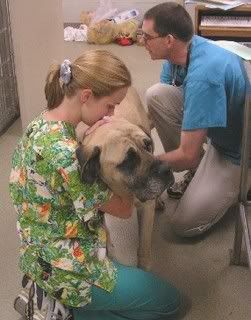
You can depend on responsible shelters to assess the animals' health and temperament in order to make the best adoption matches possible. When animals are relinquished by owners, the shelter staff makes every attempt to collect a thorough history of that pet. Then, while caring for animals, staff and volunteers try to learn as much as they can about these animals as well as those who come to the shelter as strays..
Do not be discouraged if, when you first visit the shelter, there are no animals of the breed or type you want. Shelters receive new animals every day. Your shelter may also have a waiting list and can call you when an animal matching your preference becomes available. Before choosing your pet, you can even speak with an adoption counselor about whether your choice of a particular type or breed will be best for you..
In an effort to make good matches between people and animals and to place pets in lifelong homes, many shelters provide adoption counseling and follow-up assistance, such as pet parenting and dog-training classes, medical services, and behavior counseling. Or they may be able to refer you to providers of these services..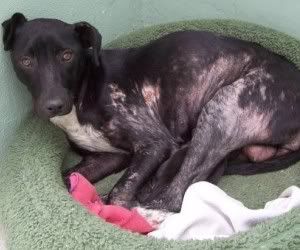
Before adopting, be sure to look over an animal's medical history so you can make sure if the animal has gotten all of their required shots such as their rabies and parvovirus shots, and all of their other vaccination shots. Most animal adoption organizations such as SPCA and Humane Society are government-funded, and therefore, must provide all their animals who are up for adoption with their vaccination shots, including rabies and parvovirus shots. It is an animal shelter's responsible to make sure that all their animals are healthy and well-taken care of..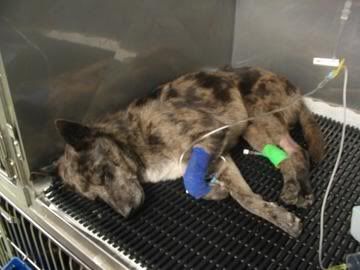
Another advantage is that shelter adoption fees are usually much less than an animal's purchase price at a pet store or breeder. And your new pet is more likely to be vaccinated, dewormed, and spayed or neutered. To locate your local animal shelter, check the Yellow Pages under "animal shelter," "animal control," or "humane society"..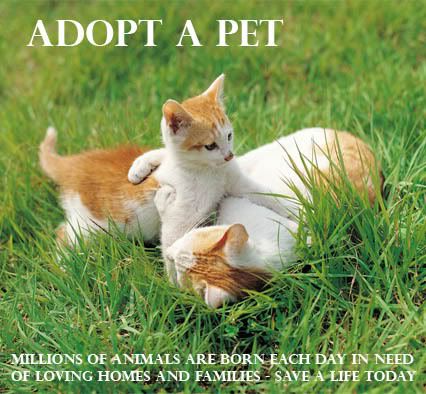
The animals that you will find at any of these adoption facilities are just as beautiful and loving as any you will find in any pet store, and they really need our help. Many of these animals have been victims of neglect and abuse, and deserve a good home. Encourage your family, friends and community to adopt a sheltered animal who desperately deserve a second chance to finally know love. Please help these animals find a good home with a loving family..
If you have any questions or concerns, please contact us and we will respond as soon as we are able
Support animal rights
Visit Petfinder Online
-Olivia
www.myspace.com/blessings_of_the_merciful
Posted by Denbeath at 5:34 PM 0 comments
Labels: animal shelter, cats, euthanasia, euthanize, neuter, puppy mills, spay, spay/neuter
Mafia Law Used Against Environmentalists for Tree Sits, Civil Disobedience, Blog Post
Green Is The New Red
Mafia Law Used Against Environmentalists for Tree Sits, Civil Disobedience, Blog Post
Apr 29th, 2009 by Will Potter
i69_tree_sitTwo environmental activists in Bloomington, Ind., have been charged with racketeering–charges originally intended to target the mob–for allegedly “conspiring” to engage in tree sits, participate in non-violent civil disobedience, and make an inflammatory blog post.
Hugh Farrell and Gina “Tiga” Wertz are organizers in the campaign to halt expansion of the I-69 NAFTA superhighway. They were arrested on Friday, April 24th, and they’re each facing five charges that carry a maximum of eight years in prison.
Four of the charges are misdemeanors for “intimidation” and “conversion” (treating someone else’s property as your own). All four misdemeanors are related to a civil disobedience stunt where some activists removed the furniture from an I-69 project office, occupied the space, and posted an eviction notice. The government says the civil disobedience stunt was intended to place Ronnie Wilson in fear, and subject him to “contempt or ridicule.”
The felony charge is for corrupt business influence, or racketeering. The government isn’t arguing that these activists were actually engaged in racketeering, but that they are part of Roadblock EarthFirst (described as a criminal enterprise) and “conspired” to do so. According to their arrest warrants, Farrell and Wertz:
* “Conspired” to remove office furniture from I-69 project offices as part of eviction notice stunts.
* “Conspired” to post an “internet blog on two publicly accessed website stating ‘you will suffer the consequences’ and ‘perhaps we’ll go to your homes, children’s daycare, churches or wherever else you happen to turn your back.” The blog posts were made after the violent removal of activists from a tree sit.
* “Conspired” to commit “theft” when six individuals blocked the entrance to Gohmann Asphalt and Construction Company using non-violent civil disobedience and caused a loss of profits.
* “Conspired” to commit “theft” by “taking unauthorized control of trees” and “depriving lawful owners of use and/or value of the said trees.” (Note: the last two bullets are only in Wertz’s arrest warrant.)
Racketeering laws are intended to combat organized crime, such as the mafia, and include crimes like extortion, bribery and money laundering. Although ambitious prosecutors have tried to use the Racketeer Influenced and Corrupt Organizations Act (RICO) to target anti-abortion activists, animal rights activists, and the Hells Angels, the purpose of the law has always been to go after illegal business activity.
But these activists, and others like them, are not protesting this superhighway to make money. They’re not doing it for personal gain. Halting this environmental destruction will not financially benefit them in any way.
Then why use mob laws against them? Because of their beliefs.
Tree sits, office takeovers and road blockades are against the law, and the government has the tools and resources to prosecute those crimes.
But because of the politics of the alleged crimes, prosecutors are reaching for more. Civil disobedience has become “theft.” Tree sits have become “unauthorized control of trees.” These trumped-up charges are a way to take what are, at the very worst, misdemeanor crimes and turn them into federal crimes. It’s an attack on individuals perceived as being leaders in the movement for the sole purpose of stamping out dissent.
A support website for Hugh Farrell and Gina “Tiga” Wertz has been set up at
http://mostlyeverything.net.
Green Is The New Red
Posted by Denbeath at 11:07 AM 0 comments
International Anti-Fur Coalition
Click HERE to Show Your Support PUT AN END TO HORRENDOUS SUFFERING
**GRAPHIC & HEARTBREAKING***
Fur Farms:
Fur-farming methods are designed to maximize profits at the expense of the animals’ health and comfort. Foxes, for example, are kept in cages about 2 feet square with up to four animals per cage. Likewise, minks suffer from close confinement, often developing self-mutilating behaviors.
Click HERE to Show Your Support
There are no regulations protecting animals on fur ranches. Cages are typically kept in open sheds that provide little protection from wind, cold, or heat. In the winter, animals often have to endure sub-zero temperatures. Summers are particularly hard on minks because they lack the ability to cool their bodies without bathing in water.
Click HERE to Show Your Support
Animals live in filth on fur farms and are often victims of disease and pests. For example, fur farm animals are fed meat by-products which are often so grisly that they are unfit even for the pet food industry: calves heads, beef lungs and windpipes, unborn calves, chicken and turkey heads, beef and chicken entrails, cow udders, and fish heads. Bacterial contamination from such a diet threatens the health of the animals —particularly that of newly weaned pups.
Click HERE to Show Your Support
Under normal circumstances, minks spend about 70% of their time in water. But on fur farms, where little water is available, their salivation, respiration, and body temperatures increase to unnatural and painful levels. In 1987, about 450,000 minks died on American fur farms due to heat stress alone.
Click HERE to Show Your Support
Even death does not come easy on a fur farm. Ranchers have devised hideous methods of killing—methods which do not “damage” the animals’ pelts:
Foxes are killed by anal electrocution—the insertion of a metal rod into the anus. Some animals are killed in decompression chambers. Minks and other animals have their necks broken.
Click HERE to Show Your Support
Contagious diseases—such as viral enteritis and pneumonia—as well as bladder and urinary tract infections are also prevalent on fur farms. Fleas, ticks, lice, and other insects are attracted by the piles of excrement under cages. These piles are often left for months—long enough for insects to infest the animals.
The growing consciousness about the suffering and exploitation inherent in fur production is helping to decrease the number of fur ranches in the United States. According to the National Agriculture Statistics Service (NASS) of the U.S Department of Agriculture, nationwide mink pelt production in 2003 totaled 2.55 million pelts, down 2 percent from 2002.
Click HERE to Show Your Support
There were 307 mink farms producing pelts in 2003, down 5 percent from a year earlier. There were 18 mink farms in the U.S. which also raised foxes in 2003, down from 20 farms the previous year.
An independent federal factfinding agency in Washington, DC has published a comprehensive report on the trade in untreated fur pelts, from a U.S. perspective.
Industry & Trade Summary: Fur Skins (USITC Publication 3666, January 2004 has) has been produced by the International Trade Commission. The Report emphasizes the decline of pelt consumption in the United States, and states matter-of-factly: “Pressure from animal rights and animal welfare groups have led many European countries to pass legislation banning fur farming or making it economically unviable to raise fur-bearing animals". In the USA there is no federal law regulating the keeping or killing of cage-raised fur-bearing animals. http://www.friendsofanimals.org/programs/fur/fur-farms.html
Click Here To Show Your Support
Posted by Denbeath at 5:50 AM 0 comments
Tuesday, April 28, 2009
The Animal Enterprise Terrorism Act Four AETA4 Update
http://news.infoshop.org/article.php?story=20090428002117753
The Animal Enterprise Terrorism Act Four (AETA4) are four individuals arrested
on February 20, 2009 and currently facing terrorism charges for allegedly
attending home demonstrations, wearing bandannas at protests, and chalking
sidewalks. They each face a maximum of ten years in prison for their "crimes.
"
Donations are still needed for legal funds to fight these ridiculous charges, as
the FBI has stated that they wish to make an example out of the defendants.
There is a support fund set up.
To learn more or to donate, visit www.aeta4.org
We also request that supporters attend court in solidarity.
The next appearance
is:
Monday, June 8
9:30AM
San Jose Federal District Court
280 South 1st St.
Judge Whyte Courtroom 6 (4th Floor)
San Jose, CA 95113
Source: www.aeta4.org
Posted by Denbeath at 9:51 PM 0 comments
Pet Stores & Puppy Mills: A Cruel Partnership

What is a Puppy Mill?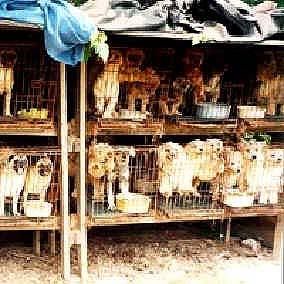
Puppy mills are commercial kennels that mass-produce dogs in squalid, overcrowded cages, without proper veterinary care, shelter from heat or cold, or adequate food and water. Substandard care and attention are given to these dogs since puppy mill owners care more about profit than the health of the dog. Cat breeding occurs under similar conditions to supply pet stores with kittens..
Stop Puppy Mills
Health and Behavior Problems
Puppy mill dogs often suffer from starvation and are forced to sit all day and sleep in their own excrement. Even though pet store puppies may look healthy at first sight, many are incubating disease at the time of sale, including the deadly Parvo virus, parasites and skin diseases. Many also have serious congenital defects like eye and hip problems. These dogs are also prone to serious behavior problems since they've been confined to cages without human interaction during their first crucial months of life..
Stop Puppy Mills
Pet Store Connection
Of the roughly 150,000 dogs and cats that end up in Washington shelters each year, more than half are put to death because there aren't enough homes to go around (nearly half are puppies and kittens). Puppy mills carelessly add to the overpopulation crisis by selling over 500,000 dogs each year through America's pet stores..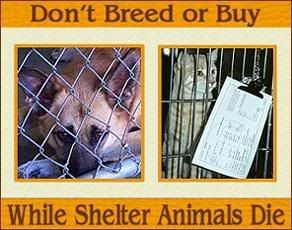
Roughly 90% of puppies in pet stores come from puppy mills. If people chose to adopt puppies and kittens rather than purchase them at pet stores, commercial breeders would have no outlet to sell their "product"..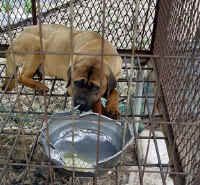
Stop Puppy Mills
Registration Papers-No Guarantee
The American Kennel Club themselves say that they "cannot guarantee the quality or health of dogs in its registry." Well-known dog behaviorist, Brain Kilcommons has said, "Mixed-breed dogs are what nature intended of dogs, and are on the whole, healthier, often more intelligent, of more even disposition, and live longer lives than many purebred dogs"..
Help Stop Puppy Mills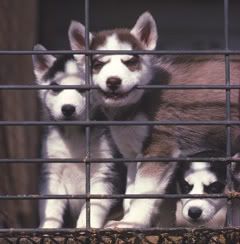
• Do not purchase animals from pet stores that do business with puppy mills and cold-hearted backyard breeders
• Adopt a rescued animal from your local animal shelters
• Discourage others from purchasing animals from pet stores which will make more money for the cruel puppy mill operation and continue to breed miserable lives for these innocent animals
• Spread awareness about the facts of puppy mills to your family, friends and community
Please help end this cycle of misery. Give these innocent animals hope that there is a life without fear or pain waiting for them.. If not you, who? If not now, when?
If you have any questions or concerns, please contact us and we will respond as soon as we are able
www.myspace.com/blessings_of_the_merciful
Posted by Denbeath at 6:32 PM 0 comments
Labels: animal abuse, Animal Cruelty, puppy mills, sick dogs
Update!
The HSUS Applauds Montcalm County, Mich. for Ending Sale of Shelter Pets for Research
April 27, 2009
The Humane Society of the United States applauds the Montcalm County, Mich. Board of Commissioners for voting to end the practice of providing dogs and cats to R&R Research, an animal broker that sells them for research.
R&R Research is licensed as a Class B dealer by the U.S. Department of Agriculture. Class B dealers purchase and collect animals from random sources — such as shelters, auctions, flea markets and individuals — and sell them to laboratories for experimentation. Some Class B dealers have been caught receiving stolen animals or fraudulently obtaining animals, including pets.
"The Humane Society of the United States applauds Montcalm County for moving away from the outmoded practice of providing companion animals to ultimately be used for research," said Jill Fritz, The HSUS Michigan state director. "This will help restore the community's trust in the Montcalm County Animal Shelter and protect animals from potentially inhumane conditions."
Educational institutions are phasing out the use of non-human animals and instead relying on donated human cadavers, models and participation in actual surgeries as teaching tools.
Posted by Denbeath at 11:02 AM 0 comments
Labels: reasearh labs, research animals, Sale of Shelter Pets for Research. lab animals
Monday, April 27, 2009
Factory Farms Breeding Grounds For Swine & Avian Flu
Partial Repost with much thanks to: Animal Rights Movement
Swine Flu and Factory Farms: Fast Track to Disaster-HSUS
History of swine flu and links to factory farmingAvian Flu -
http://www.youtube.com/watch?v=eGSCbXiNuvU
Help stop avian virus by going vegan
By Karen Davis, PhD
Recent articles in The Wall Street Journal, The Economist and elsewhere show the ongoing concern that the avian influenza virus H5N1 could cross our shores. So far, the virus has confined itself mainly to foreign countries, where reportedly it has killed fewer than 200 people, while instigating the death and destruction of hundreds of millions of chickens and other birds in the live poultry markets and factory farms that have enabled avian flu viruses to mutate and spread in the first place.
For read full article go to United Poultry Concerns - United Poultry Concerns and view poultry diseases link.
http://www.youtube.com/watch?v=EohrZLI7vZA
Antibiotics: Misused on Factory Farms
Jay Graham, MBA, PhD, a former fellow at Johns Hopkins Center for a Livable Future discusses the use of antibiotics in industrial farms and the public health risks it creates. He is currently a Polity Fellow at the American Association for the Advancement of Science (AAAS).
http://www.youtube.com/watch?v=S0MyDNcp-pE
Outbreaks among PIGS normally occur in late fall and winter and sometimes with the introduction of new pigs into herds. In the United States, studies have shown that 30 percent to 51 percent of the pig population has antibody evidence of having had H1N1 infection. Antibody can be due to vaccination of pigs for swine flu or from natural infection with swine flu. There is currently no way to differentiate antibody produced in response to vaccination in pigs from antibody made in response to natural infection with H1N1.
QUESTIONS & ANSWERS
Key Facts About Swine Influenza (Swine Flu)
Microscopic Diseases caused by animals raised for food

Avion Bird Flu
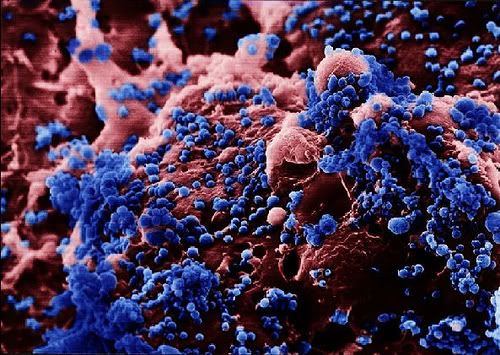
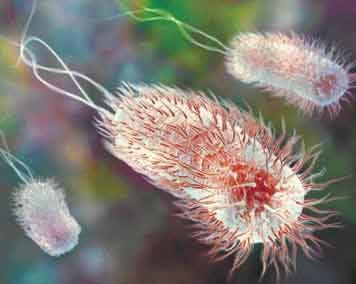
Even the spinich and tomato outbreaks were caused by sanitation animal handling in the area.
Heart Disease:
I would still be much more concerned about the leading killer in the USA - Heart Disease mainly from our animal product based diets.
Why You Should Consider Adopting a Vegetarian DietVegan Outreach
The Truth is hard to find! Bu$inesses lie for your money and older people are resistant to change.
Baxter To Develop Swine Flu Vaccine Despite Bird Flu Scandal
The fox has been given the duty of guarding the henhouse
[Just like the Federal Reserve in charge of "recovering" our economy!]
http://www.prisonplanet.com/baxter-to-develop-swine-flu-vaccine-despite-bird-flu-scandal.html
Posted by Denbeath at 6:59 PM 0 comments
Labels: avian flu, factory farms, pandemic, swine flu
Montcalm County Animal Shelter in Stanton, Michigan: Class B Dealers
Michigan: Deal Out the Class B Dealer in Montcalm County
Many of the pets at the Montcalm County Animal Shelter in Stanton, Michigan, aren't destined for loving adoptive homes—they're headed for a company that sells dogs and cats to research facilities.
The Montcalm County Board of Commissioners, which oversees the animal shelter, currently provides pets free of charge to Howard City, Mich.-based R & R Research, a Class B dealer. The for-profit business is one of eleven U.S.-based Class B dealer facilities licensed by the United States Department of Agriculture (USDA) to round up live "random source" dogs and cats—from shelters, auctions, flea markets, private individuals and other sources—to sell to animal research facilities for experimentation.
At a public meeting held in January, the County Commissioners, under pressure from outraged community members, voted to form a Blue Ribbon Committee to investigate the issue and make recommendations to the board on whether or not the County should continue this relationship with R & R Research.
The Blue Ribbon Committee recently filed its decision recommending that Montcalm County not renew its contract with R & R Research. You can help ensure that pets are not sold for experimentation.
TAKE ACTION
If you live in Montcalm County, please make a brief, polite phone call to your Montcalm County Board of Commissioners member and urge opposition to renewing the contract between the Montcalm County Animal Shelter and R & R Research. Click here to look up your commissioner and the phone number, or call the Board office at (989) 831-7300.
All Michigan residents can fill out and submit the form on the right to automatically send a message to all nine commissioners. Be sure to personalize your message so that it stands out, and will have a greater impact.
About Class B Dealers
Posted by Denbeath at 6:07 PM 2 comments
Labels: Class B Dealers, research animals, research labs
The Grand Jury Resistance Project
For all Animal Rights Activist, Environmental Activist, Vegans......This is very important information.
You do not even have to be guilty of a crime, your political, environmental views alone can make you suspect.
_____________________________________________________________________
by Eccentric Vegan
I saw this on Craigslist and decided to repost it:
*** Please distribute widely ***
The Grand Jury Resistance Project was formed in 2006 in the Bay Area to try to deal with the government’s escalated use of grand juries as a tool of political repression. While the coalition of lawyers, activists, and individuals targeted by the government has dwindled of late, there are people that still want to educate and support the activist and legal community in order to mitigate the effects of this political repression.
Grand juries are not well understood by many activists let alone the general public; people’s rights with respect to grand juries and ways of resisting them are possibly even less understood. However, now there is an online resource in the form of this website: http://grandjuryresistance.org/.
The information found on the website is by no means complete, but hopefully it will help. Please check it out and, if inclined, provide feedback, additional info, and updates. But most importantly, forward this info to people you know that might benefit from it.
In solidarity,
Kris Hermes
Grand Jury Resistance Project
Posted by Denbeath at 10:59 AM 0 comments
Labels: Activist, Grand Jury, Granf Juries, political repression, The Grand Jury Resistance Project
Sunday, April 26, 2009
ALF: Activist or Terrorist?
Dr. Steven Best
Posted by Denbeath at 11:00 PM 0 comments
Labels: Activist, ALF, Animal Liberation Front, Dr. Steve Best
The Faces of Evil
Posted by Denbeath at 10:31 PM 0 comments
Labels: baby seal slaughter, Canada seal slaughter, Canadian Seal slaughter, sealers, sealers seal hunt
The Seal Hunt is Dead! Long Live the Seals
From: Captain Paul Watson
The Sea Shepherd Conservation Society
The Seal Hunt is Dead! Long Live the Seals!
The Sea Shepherd Conservation Society has lost a ship but we are winning the war to save the seals.
On Friday the European ambassadors approved a European Union proposal to ban imports of furs and all seal products. This moves the 27 nation bloc much closer to the final decision to impose the ban and final approval now is really only a formality.
Canada and Norway are threatening a trade war with Europe but Canada needs trade with Europe far more than Europe needs seal products. Canadians in the non-barbaric industries will not have much patience in losing profits in defence of the slaughter of seals.
Canada and Norway are threatening to take Europe before the World Trade Organization.
However, "Nothing should now stand in the way of this ban being adopted," said an official from the EU's Czech presidency, which brokered a deal this week that will exclude hunts by Inuits. "It needs to go before the European Parliament in May, but that should be a formality because parliament negotiators have already agreed to it informally," the official added.
Canada, Greenland and Namibia account for around 60 percent of the 900,000 seals hunted each year.
According to the Guardian newspaper, the Norwegian Foreign Minister Jonas Gahr Stoere wrote to EU trade Commissioner Catherine Ashton this month arguing that the ban broke the principle of free trade and set a dangerous precedent on the harvesting of renewable resources.
A European official said the Commission believed the plan was "legally sound".
The 15 seal species now hunted are not endangered but European politicians demanded action after finding what they said was evidence that many are skinned while still conscious. The animals are usually first shot or bludgeoned over the head with a spiked club known as a hakapik.
Russia banned the hunting of baby harp seals last month, and Prime Minister Vladimir Putin called it a "bloody industry".
The Sea Shepherd ship Farley Mowat was seized by the Canadian government in an act of piracy in April 2008 and was auctioned off with secret bids this month without the ship ever having been arrested, charged with any offence, without a court hearing, without a summons and without due process of law.
Apparently the ship was auctioned off on April 21st but the government has not released any information on who the ship will be given to. Sea Shepherd intends to take legal action against the buyer on the grounds that the Farley Mowat is the property of the Sea Shepherd Conservation Society and was never legally forfeited.
Sea Shepherd officers Captain Alex Cornelissen and 1st Officer Peter Hammarstedt were charged with the “crime” of breaking the Seal Protection Regulations by documenting and witnessing the killing of seal pups.
They are scheduled to appear in court on April 27th but Canadian Immigration officials ordered them deported last April and informed them they are inadmissible to re-enter Canada.
“This is very convenient,” said Captain Paul Watson. “Canada will be able to seize $10,000 in bail money and will avoid the embarrassment of the trial and they will accuse our crew of refusing to appear. But they can’t appear in court in Canada if they are not allowed to enter Canada. ”
However despite the hassles and the loss of a ship that the Society was going to retire anyway, the publicity generated by last year’s campaign to oppose the sealers helped in convincing the European Parliament to ban seal products and thus the trade-off was well worth the expense and the inconvenience.
“Sometimes you have to lose the battle to win the war,” Said Captain Watson
Meanwhile Canadian politicians are spouting threats and whining like cowardly Nazi’s in a bunker as the waves of civilized reform crashes down on the barbaric mindset that has for so long endorsed and applauded the grossly inhumane and savage slaughter of one of the most innocent creatures on the planet – the baby seals.
“These cruel and sadistic baby killers have had their day,” Said Captain Watson. “The price of seal pelts has fallen to their lowest levels and soon this obscene industry will go the way of the slave trade, cock-fighting, bear-baiting, and child labour – in short it will go extinct and all of us who have fought our entire lives for this great victory will be grateful for the European nations for realizing this wonderful dream. The seal hunt is dead – long live the seals”
Posted by Denbeath at 9:37 AM 10 comments
Labels: Captian Paul Watson, commercial whaleing, sealers seal hunt, The Sea Shepherd Conservation Society, whaling
Saturday, April 25, 2009
Mass Kangaroo Slaughter
Reposted with thanks to: Phil

Australia's dirty secret....
Australia's unique heritage of indigenous animals has been treated with contempt and brutality since white man arrived. Australia is a nation led by soul-less politicians whose only concern is money, power and the ability to destroy this continent's ecology behind a protective wall of propaganda and extraordinary irresponsible legislation, which guarantees extinction.
The first thing that needs to be said about the betrayal of the kangaroo is that the sell out has not been confined to government, industry, politicians, media and some scientists…the kangaroo has also been sold out by the environmental movement both nationally and internationally.
Over the years, millions of dollars were raised overseas to help the kangaroo. Millions and millions, money that never came back to Australia so that desperately needed legal action could be taken, or professional campaigns funded. In spite of the mountains of evidence that the kangaroo industry is robbing Australia of a critical component of its wildlife heritage, the major Australian conservation groups have by and large ignored the plight of the kangaroo.
The kangaroo is a symbol of Australia. The bloody symbol of a nation whose leaders turned away from their moral, social and environmental responsibility. The kangaroo's fate will also be shared by the remaining unique wildlife in this great continent. Deliberate, politically induced extinction so that a few may gain from the death of a species.
A survey of tourists arriving in Australia showed that the two most favored tourism icons anywhere in the World were the Statue of Liberty, followed by the Kangaroo! Another survey taken when tourists were leaving Australia showed many were disappointed they didn't see any wild kangaroos!..
Kangaroos at Majura, Canberra.
ACT :



THE AUSTRALIAN GOVERNMENT IS NOW PREPARING FOR A CULL AT MAJURA:
FANTASY AND FACT
FANTASY: KANGAROOS ARE IN PLAGUE PROPORTIONS AND MUST BE CONTROLLED!
FACT: THIS IS A MYTH TO SUPPORT MASS KANGAROO KILLING. BEFORE THE SETTLEMENT OF EUROPEANS THE KANGAROO WAS ESTIMATED TO BE APPROXIMATELY 200 MILLION...TODAY THE KANGAROO IS A MERE PORTION OF THAT TOTAL.
FANTASY: KANGAROOS ARE DAMAGING THE LAND
FACT: THIS IS PURE PROPAGANDA TO PROMOTE MORE KANGAROO SLAUGHTER...THE SO CALLED OVERGRAZING IS CAUSED BY THE INTRODUCTION OF SHEEP AND CATTLE, MAINTAINED AT HIGH DENSITIES ON PASTURES YEAR ROUND.
FANTASY: IT'S GREENER TO EAT KANGAROO THAT FACTORY FARMED CATTLE AND SHEEP.
FACT: THIS UNFORTUNATELY IS PROMOTED BY MANY ENVIRONMENTALISTS...THE FACTORY FARMERS WILL NEVER GIVE UP THEIR PROFITABLE LIVESTOCK INDUSTRY.
FANTASY: IF ABORIGINAL PEOPLE EAT KANGAROO, WHY SHOULDN'T THE REST OF THE WORLD.
FACT: THAT STATEMENT IS HIGHLY DISRESPECTFUL TO ABORIGINAL CULTURE, WHICH HAS A DEEP SPIRITUAL CONNECTION TO ALL NATIVE WILDLIFE AND ESPECIALLY KANGAROOS.
FANTASY: THIS IS THE FROSTING ON THE CAKE: KANGAROOS ARE KILLED HUMANELY BECAUSE THE SHOOTERS ADHERE TO A CODE OF PRACTICE.
FACT: IT IS NOT POSSIBLE TO ENSURE THAT KANGAROOS ARE KILLED HUMANELY, AS THE KILLING OCCURS IN THE DARK OF NIGHT TORCHES/FLASHLIGHTS ARE USED TO SPOT THE TARGETS...THE CODE OF PRACTICE IS NOT MONITORED AT THE POINT OF THE KILL, BUT ONLY BY SPOT CHECKS OF CARCASSES IN REFRIGERATED CONTAINERS WHERE THE VICTIMS ARE STORED AFTER THE NIGHT'S SLAUGHTER...A KANGAROOS HEAD IS A VERY SMALL TARGET FROM A DISTANCE...HORRIBLE INJURIES OCCUR: i.e. THE MOUTH OF THE KANGAROO MAY BE BLOWN AWAY; IF THE KANGAROO ESCAPES IT WILL DIE A SLOW DEATH OF STARVATION... STOMACHS CAN ALSO BE HIT, EXPELLING THE CONTENTS WHILE THE KANGAROO IS STILL ALIVE...HORRIBLE CRUELTY HAS ALSO BEEN DOCUMENTED...THE KANGAROOS ARE HUNG ON HOOKS ON THE SIDE OF THE KILLER'S VANS...SOME KANGAROOS ARE STILL CONSCIOUS WHEN THIS HAPPENS...JOEYS ARE RIPPED FROM THEIR MOTHER'S POUCHES AND STOMPED TO DEATH, THE JOEYS THAT ESCAPE WILL DIE FROM LACK OF ITS MOTHER'S MILK, EXPOSURE AND HYPOTHERMIA.
What can you do to help? write to the following and sign the petitions:
PRIME MINISTER KEVIN RUDD:
http://www.aph.gov.au/house/members/member.asp?id=83T
THE MINISTER OF TOURISM MARTIN FERGUSON:
http://www.alp.org.au/people/vic/ferguson_martin.php
NATIONAL
Hon Prime Minister Kevin Rudd.
Parliament House Canberra ACT 2600
PH:07 38994031 (Electorate Office
PH:02 62777700 (Parliament Office)
http://www.alp.org.au/action/feedback.php
Hon Carmel Tebbutt
NSW Minister Environment
Lev 39 Governor Macquarie Tower
1 Farrier Place Sydney 2999
02 92284866
marrickville@parliament.nsw.gov.au
Hon Peter Garrett
Federal Minister for Environment Heritage and Arts.
PH: 02 93496007
Peter.Garrett.MP@aph.gov.au
Parliament of Australia
House of Representatives
http://aph.gov.au/house/index.htm
Parliament of Australia
House of Senate
http://aph.gov.au/Senate/index.htm
ACT GOVERNMENT
Jon Stanhope
Chief Minister, ACT
STANHOPE@act.gov.au
ACT Commissioner for Sustainability and the Environment - EPA
Maxine.Cooper@act.gov.au
** Narelle Sargent.
Project Manager - EPA
Narelle.Sargent@act.gov.au
** Michele Walters.
Project Manager - EPA
Michele.Walters@act.gov.au
ACT Environmental Commission
EnvComm@act.gov.au
ACT Greens Party
peter.stahel@aph.gov.au
ACT Greens Senator Bob Brown
Senator.Bob.Brown@aph.gov.au
Shane Rattenbury.
Greens Member of the ACT Legislative Assembly - Enviromental
RATTENBURY@parliament.act.gov.au
Mr Simon Corbell
Australian Labor Party
CORBELL@act.gov.au
ACT - Leader of the Opposition
Zed.Seselja@parliament.act.gov.au
The Hon.
Dr Mike Kelly AM MP
Parliamentary Secretary for Defence Support
ParliamentarySecretaryDS@defence.gov.au
The Consumers' Federation of Australia - NATA
Robyn.Easton@act.gov.au
Petitions:
Stop the killing
http://www.thepetitionsite.com/1/urgent---stop-the-killing-of-more-babies-like-this..
Call for moratorium
http://www.gopetition.com/petitions/kangaroo-extinction.html
Stop Kangaroo Shootings
http://www.thepetitionsite.com/1/kangaroo-shootings
Posted by Denbeath at 4:08 PM 0 comments
Friday, April 24, 2009
Video: A Veterinaruan's Perspective on Bowhunting
Posted by Denbeath at 5:26 PM 0 comments
Labels: aerial wolf hunting, Bow Hunting, bowhunting, killing fields
Recession Means More Abandoned Pets ~

The Detroit News reports an unprecedented number of abandoned cats and dogs being left behind in foreclosed homes, in dumpsters and in parking lots all around the city. Meanwhile more people who bring their pets to shelters are saying they’ve lost their jobs and can’t afford to care for them. Or, after losing their homes, they’re moving to apartments that don’t allow pets.
And it’s not just Michigan. The American Humane Association estimates that with 8,000 houses going into foreclosure every day, between 15,000 and 26,000 animals are in danger of losing their homes daily.
A recent national survey by petfinder.com finds that 84 percent of shelters and rescue groups are caring for more pets because of the economy; and as you might expect, 37 percent of them report seeing a decrease in pet adoptions in the last year.
Some shelters are trying to help people keep their pets by creating pet food assistance programs. There are groups donating pet food to seniors — some of whom had been feeding delivered meals meant for them to their pets.
Animal groups encourage people who have lost their homes to take time to plan for their pet; to try and find an apartment that will accept animals and not just leave them behind to fend for themselves. They can’t

-Sue
Posted by Denbeath at 9:33 AM 0 comments
Do You Know The Truth About Pigs?
Most people don't have the privilege of getting to know a pig. For most of us, the thought of pigs conjure images of dirty, greedy animals living in their own waste. We couldn't be more wrong! Pigs don't perspire, and so wallow in mud to keep themselves cool. They are naturally very clean animals and, if given the choice, they prefer to cool themselves down in fresh water. When in a natural environment, pigs build communal nests and toilet areas away from their sleeping area
"I like pigs.. Dogs look up to us. Cats look down on us. Pigs treat us as equals. "
British politician and Nobel Prize Laureate Winston Churchill

Smarter than Dogs?
Pigs are remarkably intelligent creatures thought by many to be smarter than dogs. They can be trained to respond to simple voice commands, and are easily toilet trained. Studies have revealed that pigs have a long memory and are able to focus on specific tasks even better than some primates. Research conducted at Bristol University found that pigs are cleverly competitive with other members of their herd, and to avoid confrontation will wait until nobody is looking to sneak away hidden food. "This sort of behaviour suggests that pigs can compete with each other in quite complex and 'cerebral' ways," says Dr Mendl of Bristol University.
"[Pigs] have the cognitive ability to be quite sophisticated. Even more
so than dogs and certainly three-year-olds. "
Professor Donald Broom of Cambridge University Veterinary School
Playful Pigs
Pigs develop highly complex social structures and form strong bonds with other members of their group. At the age of around 3 weeks, piglets begin to play with other piglets, and for the majority of weeks thereafter will interact more with each other than with other members of their herd. It is during this time of play and interaction that strong bonds are formed, often lasting the duration of their lives

Mother and Child
About 24 hours before giving birth, pregnant mother pigs will temporarily leave the social group in order to collect branches and soft material to build a nest. Shortly after giving birth, piglets will often move to the head of the sow and touch noses, vocalise, and then begin suckling. The mother will stay isolated in her nest with her newborns for the first week, which allows her to develop a strong bond between herself and her piglets. Mothers are known to 'sing' to their offspring, which is believed to inform them when her milk is flowing.
A Healthy Appetite
Most of a pig's day is spent foraging and eating. The end of their snout contains has many tactile receptors as the human hand, and is a highly specialised and sensitive tool. This, along with their exceptional sense of smell, enables pigs to locate and uncover tasty treats such as seeds, roots, and truffles. Unlike dogs or humans, pigs never dangerously overeat-even when given access to unlimited food.
intelligent and social animals
who suffer tremendously within
intensive farming systems.
LIES THE
CRUEL TRUTH
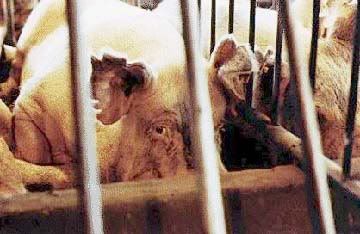





— the scalding tank —
where he/she will be boiled, alive and fully conscious
before you eat another sausage link!!
One Voice

Posted by Denbeath at 9:21 AM 0 comments
Labels: animal abuse, Animal Cruelty, animals, baby seal slaughter, hog farms, live animal trasport, pigs, pork

